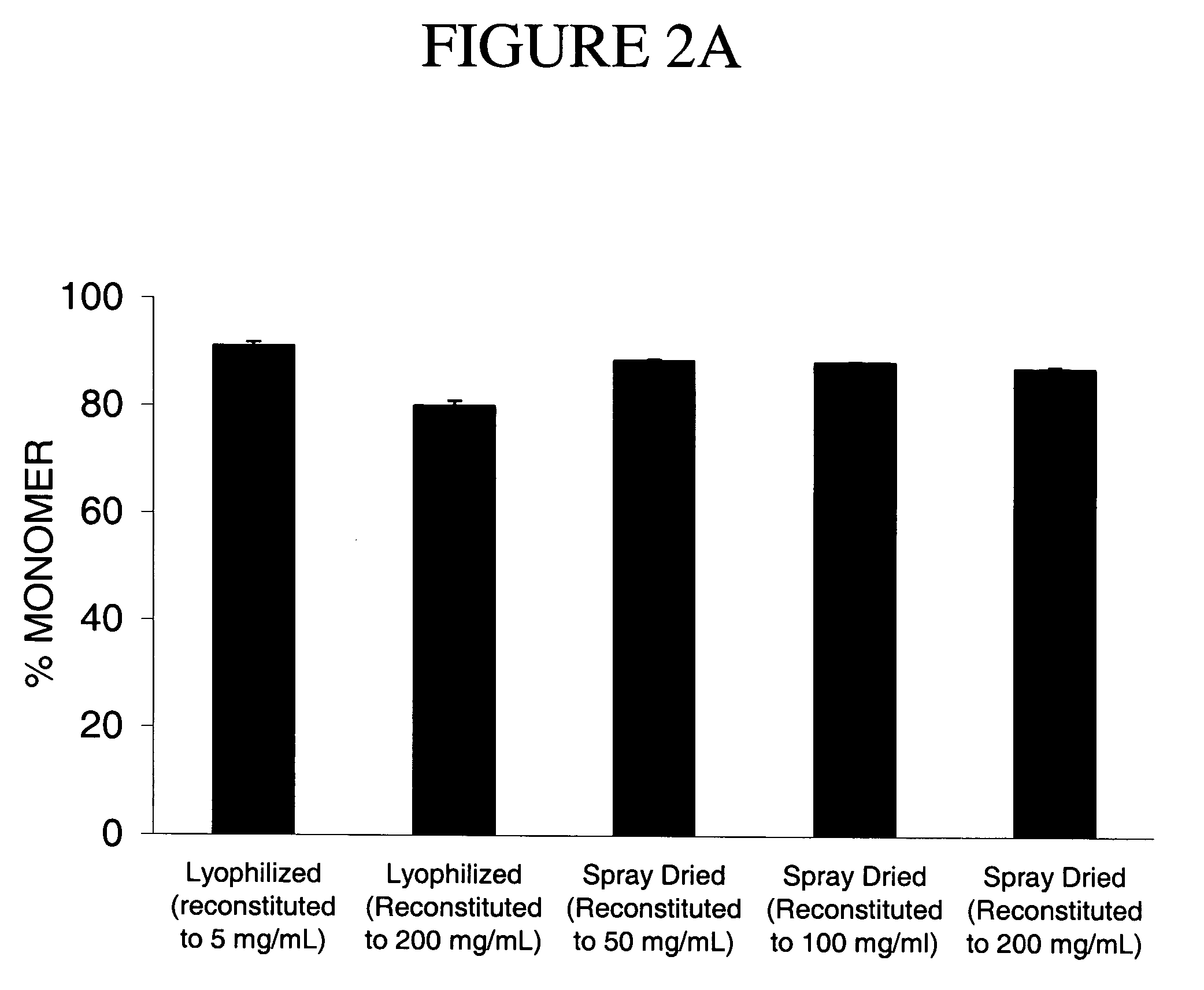Antibody-containing particles and compositions
a technology of antibodies and compositions, applied in the field of antibodies-containing particles, can solve the problems of limited widespread adoption, difficulty in providing antibodies intended for therapeutic use, and antibodies that are unsuitable for absorption through the gastrointestinal tract, and achieve the effect of reducing the complexity of the problem
- Summary
- Abstract
- Description
- Claims
- Application Information
AI Technical Summary
Benefits of technology
Problems solved by technology
Method used
Image
Examples
example 1
IgG Formulation
[0154] A dry powder IgG formulation was prepared. Polyclonal human IgG and trehalose (a glass-forming substance due to it relatively high glass transition temperature) were combined in a trehalose to IgG molar ratio of ˜350:1. Further, a small amount of Tween-20 was added to the formulation to minimize protein aggregation and also to facilitate rapid reconstitution of the spray dried powder. Finally, a histidine buffer was included to enhance stability. The components were spray dried as described above and the resulting spray-dried formulations were tested.
[0155] Processing Stability: The human IgG spray-dried formulations were analyzed by HPLC both before and after spray drying (SD), and following reconstitution to low concentration (5 mg / mL). Both the before and after spray-dried formulation were reconstituted with deionized water, % monomer remaining analyzed by HPLC. Each sample was run in duplicate and reported as % mean±standard deviation (n=2).
[0156] The re...
examples 2-8
CAT-213 Formulations
[0162] Three CAT-213 formulations were prepared. The composition of each formulation is provided in Table III. Formulations were reconstituted at low concentrations (5 mg / mL) with diluents containing varying amounts of Tween-80: Diluent A containing 0.05% and Diluent B containing 0.1% w / v.
TABLE IIIComposition Description of Preliminary CAT-213 FormulationsCarbohydrateCAT-213CarbohydrateCitrate BufferTween-80Formulation #Type(% w / w)(% w / w)(% w / w)(% w / w)1Trehalose4945602Sucrose5143603Trehalose49455.30.7
[0163] The results of the processing stability analysis are shown, as % monomer remaining following spray drying, in FIG. 3. Sample analysis was preformed in duplicates and results represent means ± one standard deviation. All three CAT-213 formulations retained their stability following spray drying and reconstitution at low concentration. These results are in agreement with those obtained with human IgG, indicating that spray-drying technology presents a very ro...
PUM
| Property | Measurement | Unit |
|---|---|---|
| Fraction | aaaaa | aaaaa |
| Diameter | aaaaa | aaaaa |
| Diameter | aaaaa | aaaaa |
Abstract
Description
Claims
Application Information
 Login to View More
Login to View More - R&D
- Intellectual Property
- Life Sciences
- Materials
- Tech Scout
- Unparalleled Data Quality
- Higher Quality Content
- 60% Fewer Hallucinations
Browse by: Latest US Patents, China's latest patents, Technical Efficacy Thesaurus, Application Domain, Technology Topic, Popular Technical Reports.
© 2025 PatSnap. All rights reserved.Legal|Privacy policy|Modern Slavery Act Transparency Statement|Sitemap|About US| Contact US: help@patsnap.com



